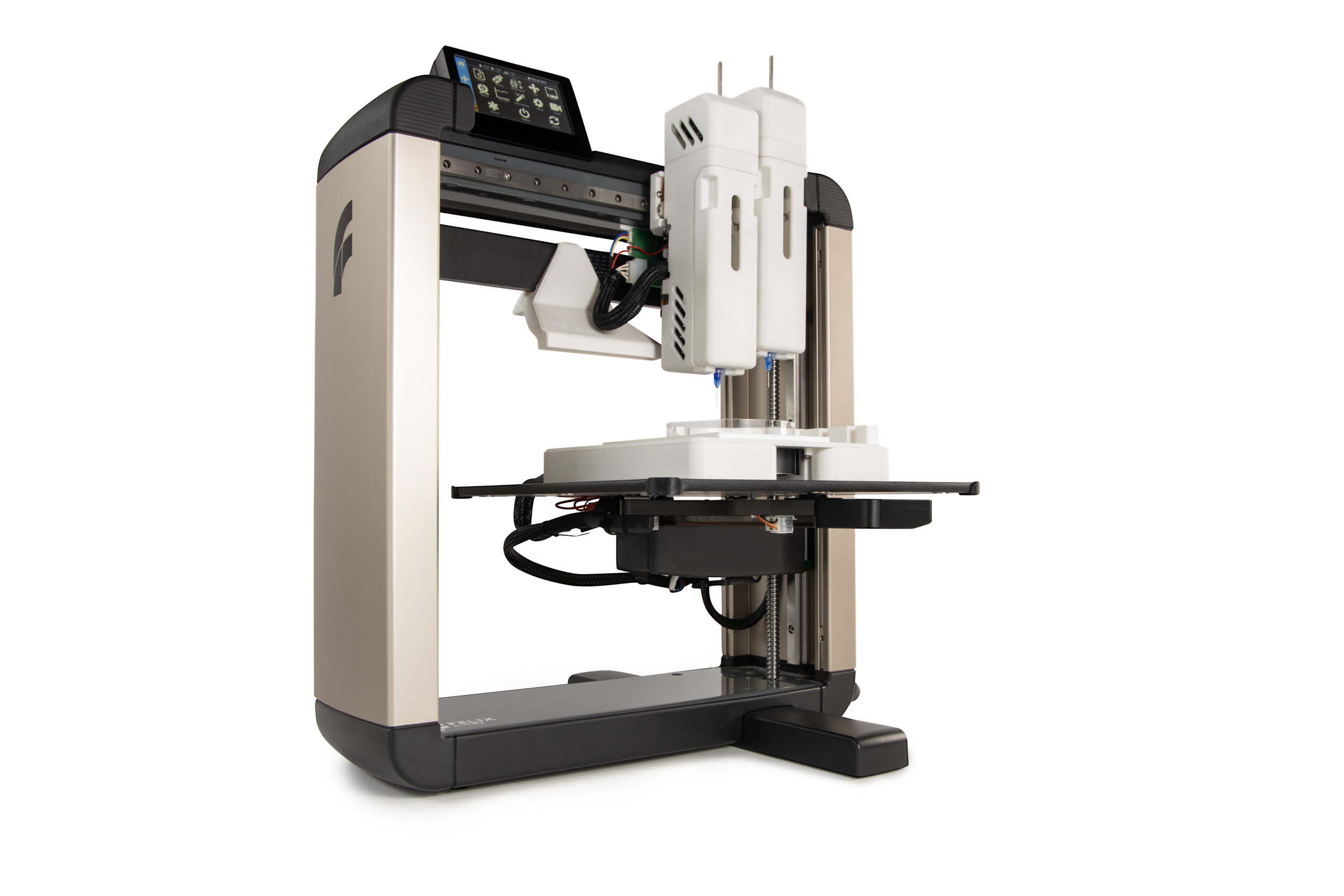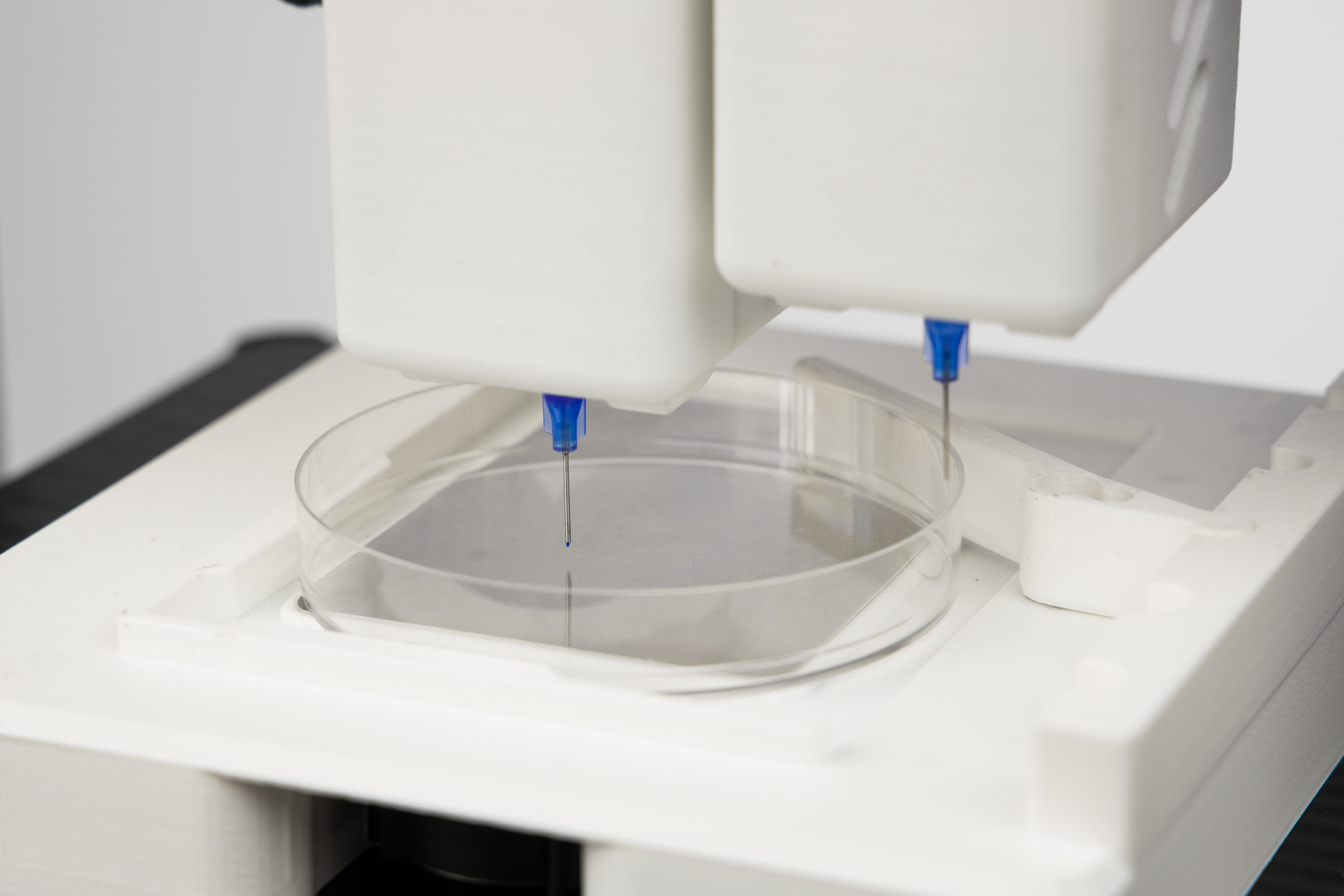In a field where creating machines is the beginning of a strategy that could unfold to become very dependable technology for human health, many startups and companies are developing bioprinters to fill a niche that could become a trend. This is the case of Dutch manufacturer FELIXprinters. Their new bioprinter is an ambitious project born out of a concern for the future of healthcare, more particularly for the treatment of neurodegenerative disorders.
The company is one of the three commercial partners of the European Union Consortium Training4CRM, that addresses gaps in cell-based regenerative medicine (CRM) for treatment of neurodegenerative disorders, like Parkinson´s disease, which occur as a result of progressive loss of structure, function, and death of neurons in the brain – one of the most complex organs in the body. One of the concerns addressed by Training4CRM is the development of therapies to cure these neurodegenerative diseases, with the ultimate goal of having pre-clinical trials in different animal models and in vivo monitoring for the project-generated implants using developed sensing tools.
Taking advantage of years of knowledge in 3D printing systems as well as previous success creating 3D printers has given FELIXprinters the legitimacy to undertake this new mission: making a bioprinter from scratch. Along with the Technical University of Denmark (DTU), the company has designed a system that works for all types of bioprinting research. Called the BIOprinter, it is the first machine of its kind in the Netherlands according to Guillaume Feliksdal, the Founder and Director of FELIXprinters.
As part of the EU consortium project, the company was tasked with developing and supplying a 3D printing platform capable of creating the necessary cell arrays. It resulted in a biofluid friendly extrusion system and hybrid 3D printing technology that simultaneously enables filament extrusion printing and hydrogel bioprinting, incorporating in the same scaffold different material properties. Equipped with strong motors that can extrude a wide range of material types and viscosities, the BIOprinter is quite unique due to its modular design, easily upgradable features, and competitive price.
“This printer has quite a lot of background on it,” suggested Feliksdal during an interview with 3DPrint.com. “We are new in this biotechnology field, however we adapted quickly because we have a very solid engineering base and many accurate 3D printers already in the market. However, we had to consider that there are different applications in the bioprinting niche, so our objective for the BIOprinter was to facilititate the technology to as many researchers as possible, which led us to make a modular unit that is easily adaptable.”
Designed by engineer Hakan Gürbüz, a Marie Curie Early Stage Researcher representing FELIXprinters in the EU-backed project, the novel hybrid 3D bioprinter is used every day to fabricate perfusable 3D hybrid scaffolds and will ultimately be needed to produce neural implants to help in the battle against Parkinson’s disease, a disorder with a high prevalence associated with short- and long-term impairments and disabilities.
Gürbüz, a doctoral candidate at DTU Bioengineering, also talked to 3DPrint.com about why this bioprinter is so important for the research community and why it is vital for the EU project.
“I noticed that many researchers were having trouble acquiring bioprinting machines, mainly because they are really expensive,” suggested Gürbüz. “So, I decided to use the existing FELIXprinter technology as a basis for the BIOprinter. This basically means that customers can buy the BIOprinter, but if they already own any of our FELIXprinters, they can just purchase the BIOprinter kit and convert their 3D printer into a bioprinter, very fast. In fact, the machine is so adaptable, that users who have purchased the BIOprinter can easily convert it into a filament printer as well. Even more so, if they also require UV modules, they have the option of purchasing our UV light source module separately, for UV curing.”
It took Gürbüz and his colleagues two years to come up with the versatile, 9650 Euro, entry-level device, which was initially developed to create disease models and is now under commercialization by FELIX. The expert suggested that when they were pricing it, they also factored in the cash amount that is usually awarded as a research grant to European laboratories that need to purchase machines (which is usually under 10,000 euros). This makes the BIOprinter a very competitively-priced device and accessible across many research labs throughout the continent.
“Any scientist can use this entry-level bioprinter, even many institutions and universities are considering purchasing the BIOprinter for their undergraduate and graduate students to use,” went on Gürbüz. “As many of us in academia know, the expensive bioprinters in research labs are usually for the exclusive use of a few professors. Instead, the BIOprinter is a great addition for anyone with a desire to create skin models, print oral drugs, tissue, and even food. Yes, it’s even possible to print food with the BIOprinter.”
The group’s work has been described as a step forward in tissue engineering, helpful for building artificial model tissues, organs, and implants for regenerative and personalized medicine by using human stem cell technology.
Feliksdal described their new product as an “upgradable machine,” claiming that “it is part of our company’s philosophy to create attractive platforms, so that, for example, customers who bought our printers in 2011 can still use it today thanks to the upgradeable system; making the machine worth the investment in the long run.”
“Our idea has always been to create a machine that is user-friendly and therby easy to handle, to help researchers focus on their investigation over everything else. For example, we noticed that the more expensive bioprinters only worked with their own syringe, which costs a lot of money and translates into a big budget. In our search to make the device more accesible to research labs everywhere, we decided BIOprinter would be compatible with any standard 5 ml syringe,” said the founder.
Since Feliksdal established the company in 2010, he understood the requirements of the 3D printing market and saw the potential of the machines, considering “3D printing an eye-opening technology.” Moreover, he suggested that “the Netherlands is an ideal country to develop novel machines, like the BIOprinter, because there is a big market for innovative products and a hub for developing knowledge.”
Teaming up in this ambitious effort to battle Parkinson’s disease shows how far FELIXpriners is willing to go. The task was a big challenge, yet they were able to meet the scientists’ needs. Gürbüz’s design for the development of 3D printing technology enabled optimal culture conditions for printing cells. In fact, the engineer’s industrial role in the EU project is finished, and now all that remains is continuing his work developing perfusable scaffolds for brain organoids: “A big part of my work as a researcher for the Consortium involves using the BIOprinter every day to print all the scaffolds, and then to check that the cells within the scaffold are releasing dopamine when triggered, so that we know whether our neural implant prototypes are working or not.”
Gürbüz and Feliksdal said that they consider the BIOprinter to be a great addition to the EU project, where the ultimate aim of Training4CRM is to develop a wireless medical device that can be controlled, for instance, using a smartphone. Even though the EU project will not be finished until next year, Feliksdal is already gazing into the future, hoping that the BIOprinter will serve users beyond the research field and in clinical applications.
Now more than ever, as the biotechnology field adapts to keep up with these changing times, new developments, cross-border research collaborations, and scientific data exchange are critical. Moreover, scientists can continue to strengthen their work thanks to new innovations, like the BIOprinter, that are becoming an essential part of modern scientific investigation. Bioprinting devices give researchers greater agility in their work and the chance to focus on their investigation, that is what FELIXprinters wanted when they created the novel BIOprinter, to facilitate and accelerate processes for researchers everywhere.
Subscribe to Our Email Newsletter
Stay up-to-date on all the latest news from the 3D printing industry and receive information and offers from third party vendors.
You May Also Like
3D Printing Financials: Prodways’ Q1 2024 Revenue Drop and Accounting Overhaul
Prodways (EPA: PWG) has released its earnings report for the first quarter of 2024, announcing modest revenue. This result is lower than last year’s, reflecting the company’s ongoing adjustments to...
3D Printing Financials: Prodways Faces Headwinds, Cuts Jewelry Printers and Cristal Dental Lab for Turnaround
Prodways (EPA: PWG), a European leader in industrial 3D printing, encountered financial challenges in 2023, as revealed in its earnings report. The company saw a decline in revenue and profitability...
Printing Money Episode 12: Q3 2023 Earnings Reports with Troy Jensen, Cantor Fitzgerald
Episode 12 of Printing Money brings with it a slightly different approach, as Alex Kingsbury sits this one out while Danny runs the show. Equity research analyst Troy Jensen, now of Cantor...
3D Printing News Briefs, November 18, 2023: Depowdering, Jewelry Patterns, & More
We’re kicking off 3D Printing News Briefs with a little business today, as Horizon Microtechnologies invested in a micro AM platform from Boston Micro Fabrication, and Rivelin Robotics announced a...


































